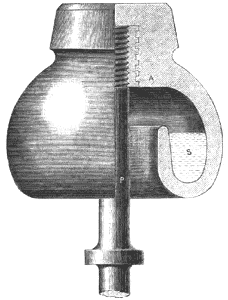[Trade Journal]
Publication: Nature
New York, NY, United States
vol. 25, p. 515-517, col. 1-2
ELECTRICITY AT THE CRYSTAL PALACE
III. Land Telegraphy.
HAVING regard to the leading part played by our country in the rise and development of the telegraph, it was only to be expected that the display of historical apparatus at the Crystal Palace should be a very good one. Thanks to the antiquarian zeal of Mr. W. H. Preece, F.R.S., and his active interest in all that pertains to the history of his profession, the Post Office has become the careful custodian of all the early telegraphs employed in England, and the stall of H.M. Postmaster General is rich in these relics of the past. Indeed, there is the nucleus here of an interesting museum of telegraphic apparatus; and it is to be hoped that such a museum will one day be established. The Society of Telegraph Engineers and Electricians have now their Ronald's Library of Electrical Works, which is practically open to all inquirers. A public museum of electrical appliances, rendered historical by the lapse of time, would be a supplementary institution of inestimable value.
·
·
 |
In insulators the pattern exhibited by Messrs. Johnson and Phillips is deserving of notice. As illustrated in the figure, it consists of a porcelain bell A, curved inwards to form an oil-well S, which is filled with a fluid insulator, such as paraffin. P is the bolt of the insulator, which supports it from the bracket of the pole. As a film of dew or rain cannot form on the surface of the insulating oil, the insulation resistance of this insulator is said to be many hundred times higher than that given by the ordinary insulators in use, and what is perhaps of more consequence, it is far more constant.
·
·
